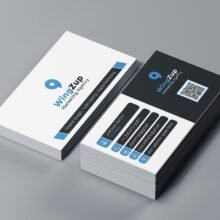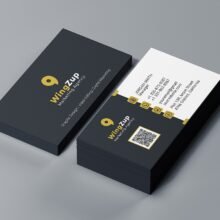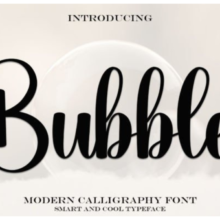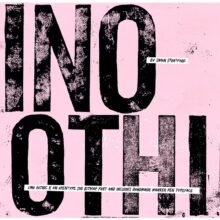The Business Card: A Timeless Tool in a Digital World
In an age where communication has largely moved online, the humble business card remains a powerful and relevant tool for professionals and entrepreneurs. While email signatures, LinkedIn profiles, and digital contact sharing apps have their place, a well-designed business card offers something that technology often cannot — a tangible, memorable first impression. From its historical origins to modern design trends, the business card has evolved but continues to serve its foundational purpose: to introduce, connect, and leave an impression.
A Brief History of the Business Card
The business card has a surprisingly long and rich history. Its roots date back to 15th-century China, where visiting cards were used by aristocrats to announce their intention to meet someone. These early cards functioned much like today’s business cards — they conveyed identity and purpose. In 17th-century Europe, particularly in France and England, “trade cards” began to circulate. These cards combined advertising with location directions in a pre-street-numbering world.
By the 19th century, business cards became an essential part of business etiquette in the Western world. They were exchanged not only during business dealings but also in social settings. Over time, they transitioned from a social nicety to a business necessity, especially as commerce and industry expanded during the Industrial Revolution.

The Purpose of a Business Card
At its core, a business card serves as a compact, physical representation of a person or company. Its primary functions include:
-
Providing Contact Information: A business card ensures your name, job title, company, phone number, email, and website are easily accessible.
-
Making a First Impression: The design, texture, and content of your card all contribute to how you’re perceived.
-
Establishing Credibility: A professionally designed card lends legitimacy to your role and your business.
-
Facilitating Networking: During events, meetings, or casual encounters, handing out a business card opens the door to future communication.
Even with smartphones and social media, people appreciate the ease and tactile nature of a business card. It doesn’t require a battery, internet connection, or app — just a handshake and a moment of attention.
Anatomy of an Effective Business Card
A good business card balances form and function. Here are the key elements every card should include:
-
Name and Title: Your name should stand out. Include your job title to clarify your role.
-
Company Name and Logo: These reinforce your brand and credibility.
-
Contact Information: Phone number, email, and website are essential. Physical address is optional unless you’re in a location-based business.
-
Social Media Handles: For modern professionals, adding LinkedIn or Instagram handles can be valuable.
-
Whitespace and Layout: A cluttered card is hard to read. Clean, professional spacing makes a stronger impact.
-
Font and Color Scheme: These should reflect your brand personality — bold and innovative, sleek and modern, or elegant and classic.
For More: Click Here
Business Card Design Trends
Design is crucial. In 2025, business card design continues to evolve with trends that merge creativity and practicality. Here are a few popular directions:
1. Minimalist Designs
Less is more. Clean lines, sans-serif fonts, and ample white space create an elegant, modern look. This trend emphasizes clarity and professionalism.
2. Bold Typography
Using oversized fonts to display a name or company adds instant visual impact. It also ensures the most important information is noticed first.
3. Eco-Friendly Materials
As sustainability becomes a priority, many professionals are opting for recycled paper, kraft cardstock, or bamboo alternatives.
4. Interactive Elements
QR codes are increasingly used to link directly to websites, portfolios, or digital business cards. This allows for dynamic, up-to-date information in a static format.
5. Textured and Specialty Printing
Embossing, foil stamping, and spot UV coating add tactile interest and elevate the perceived value of your card.
6. Non-Traditional Shapes
Square cards, rounded corners, and die-cut edges help a card stand out in a stack. However, it’s important to ensure they still fit in standard wallets or cardholders.

Digital vs. Physical Business Cards
While digital business cards (apps, NFC-enabled cards, or QR-based profiles) offer convenience and tech-forward flair, they can lack the emotional impact of a physical exchange. A physical card involves a gesture, eye contact, and presence — elements that foster trust and personal connection.
That said, combining both can be powerful. A printed card with a QR code linking to a portfolio, calendar, or LinkedIn page offers the best of both worlds.
Industries Where Business Cards Still Thrive
Though business cards are universal, they are especially vital in certain industries:
-
Real Estate: A business card is a realtor’s portable billboard.
-
Design & Creative Fields: Cards act as mini portfolios that showcase artistic style.
-
Sales & Marketing: First impressions matter; a card opens conversations.
-
Law & Finance: A classic, well-crafted card signifies trust and professionalism.
-
Event Planning & Hospitality: Cards reinforce branding in client-facing industries.
How to Make Your Business Card Stand Out
In a competitive market, your card should reflect your uniqueness. Here are a few strategies:
-
Tell a Story: Use the back of the card for a brief tagline, mission statement, or testimonial.
-
Use High-Quality Material: Thick cardstock, matte finishes, or unique textures signal professionalism.
-
Add a Personal Touch: Handwritten notes on the back show effort and authenticity.
-
Use Brand Colors Strategically: Consistency with your website, logo, and marketing materials reinforces your brand.
Common Business Card Mistakes to Avoid
Avoid these pitfalls to maintain a polished, professional image:
-
Overcrowding: Don’t cram in too much text or information.
-
Using Poor Quality Printing: A cheap-looking card reflects poorly on your brand.
-
Neglecting Proofreading: Spelling errors or outdated info can damage credibility.
-
Ignoring International Norms: If you work globally, be aware of cultural differences in card etiquette.
Conclusion
Despite the rise of digital networking, the business card remains a valuable tool in any professional’s arsenal. It’s more than just a slip of paper; it’s an extension of your brand, a conversation starter, and a lasting reminder of who you are. In just a few square inches, it carries immense potential — to connect, impress, and build relationships.
In today’s world, where attention is fleeting and impressions matter, the business card is still one of the simplest and most effective ways to say: This is who I am, and this is how we can connect.


















